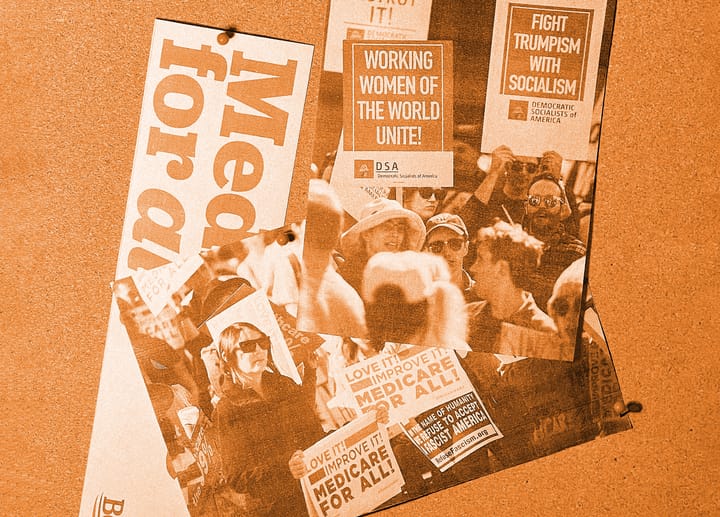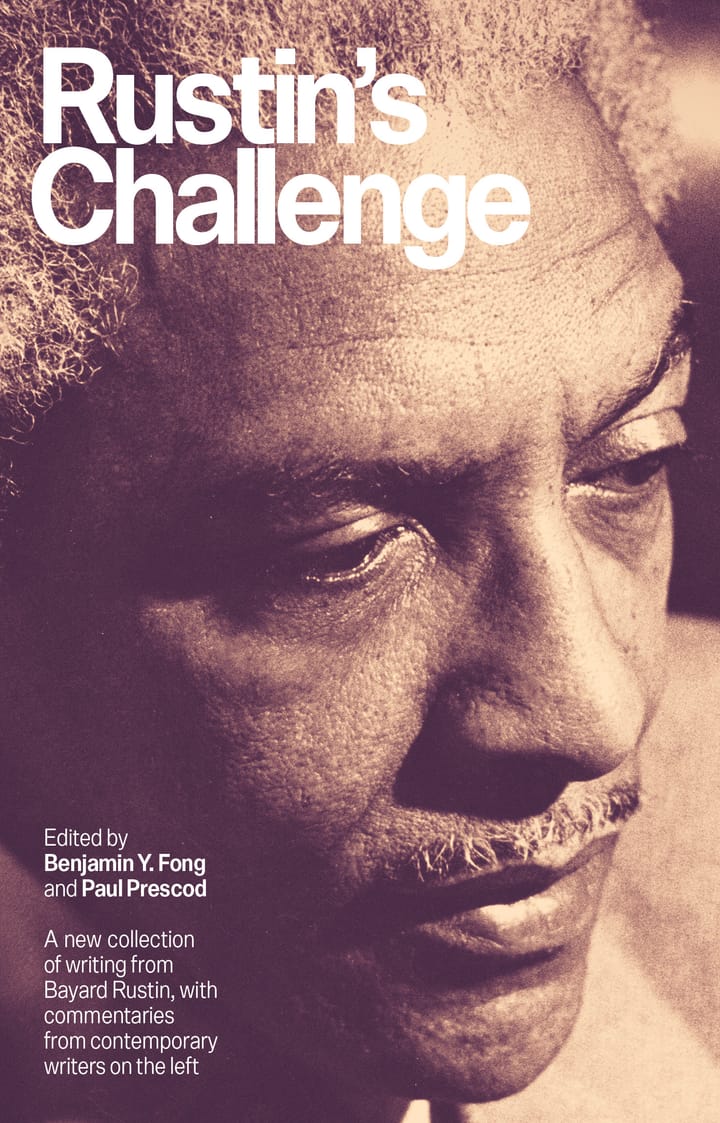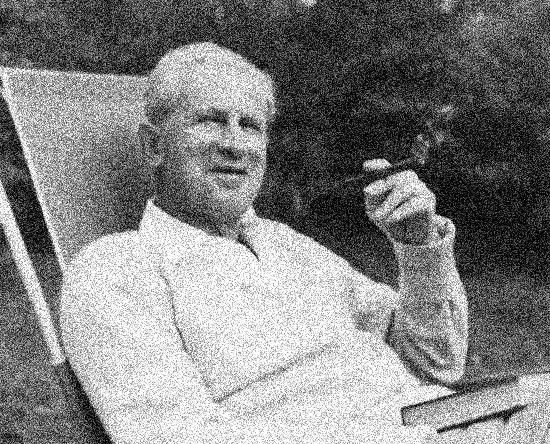Strategic Disruption
Democratic politics vs. blowing up pipelines is not a great debate. Militant disruption shouldn’t be written out of the tactical repertoire, but it matters who causes it, and to what end.

As western societies appear to spiral around the drain, with slow decline and the erosion of living standards punctuated with shocks of war and right-populist furor, the appeal of radical tactics is bound to grow on the Left. The world is falling apart, and so, as Andreas Malm explains in a recent video interview, “we have to go beyond the strict protocols of peaceful protest and civil disobedience.” Here’s Malm explaining the unexpected success of his book, How to Blow Up a Pipeline (recently made into a movie):
The climate crisis is big enough to merit potentially militant forms of struggle. It’s bizarre actually that no one had made that case in a kind of coherent form before that book. So a lot of people found this interesting and persuasive enough that you would have mainstream outlets like The Financial Times or The Economist recommending this as one of the best books about climate, which I hadn’t expected. But again, the explanation for this cannot be the merits of the book itself, it’s the severity of the crisis, and the realization that everyone who knows about this crisis have that things are now so bad that we have to open up to the idea that we have to do something radical about it. So the idea that blowing up a pipeline is less of a crime than building a pipeline is an idea that many people can subscribe to.
What Malm doesn’t consider is that outlets like FT, representing as they do the interests of the capitalist class, promote his book precisely because it offers not a real challenge to the status quo, but rather the same quasi-insurrectionary fantasy animating everything from black blocs to autonomous zones. Destructive action by a self-declared green vanguard is a sure recipe for the continued marginalization of any left movement against climate change.
In a recent critique of Malm’s politics, Jacobin contributing editor Chris Maisano responds simply that “it’s not time to give up on democratic politics to save the planet,” and that “bold initiatives” like DSA’s Build Public Renewables Act (BPRA) campaign point the way forward. It’s still a question just how impactful the BPRA will be; the geographer Matt Huber (ostensibly on the same political side as Maisano against Malm) is rather skeptical of the effusive praise for it coming from left media spheres. Regardless of just how significant the BPRA will end up being, I have a difficult time believing that evidence like a “compromised” piece of legislation won by a coalition of green NGOs and socialists on unfounded, lofty claims of climate effects will continue to convince enough people that the democratic road is still worth trodding. In the long run, Malm’s theatrics, appealing in their radicality to leftists and in their ultimate impotence to the powers that be, sadly seem like they have more staying power than democratic socialism.
Huber’s basic problem with both the BPRA campaign and Malm’s orientation is the same: they didn’t/don’t have a place for organized labor. The former at least had the interests of labor in mind in crafting the bill, but none of the key unions that one would be expected to be involved in the effort were, and in fact many opposed the legislation: “a classic case of a leftwing ‘class focused’ appeal to industrial electricity workers, but not one that is ‘class rooted’ in the unions and among the workers themselves.” Malm, by contrast, dispenses with the class focus altogether: in his view, “The working class looks so different now compared to 100 years earlier. It's fragmented and so deeply depoliticized. Anyone who thinks that the climate problem will be solved by workers councils or something similar is living a dream that was a reality 100 years ago.”
This is a curious claim, not least because the working class (in the United States, at least) in 1923 was also fragmented and deeply depoliticized. The promises of welfare capitalism in the 20s gutted unions, which were then decimated with the Depression. A decade later, however, the labor movement appeared poised to revolutionize American society, with the Committee for Industrial Organization acting as tip of the spear. That ascendant force did not grow out of totally new organizations or formations but was seeded by unions in the stubbornly conservative American Federation of Labor.
There are many things that contributed to this remarkable turn of fortune: a friendly political environment, a public that was skeptical of big business, a labor federation that was finally willing to foster what historian Lizabeth Cohen has called a “culture of unity” within labor. Perhaps most importantly, workers were willing to use new militant tactics, including the famous “sit down” strike (harkened back to in the UAW’s recent “stand up” strikes). The sit down solved a basic problem of the traditional strike: if workers are occupying the factories, strikebreakers can’t be escorted past the picket lines to keep production going. But it was also a direct affront to a powerful American mythology, that of private property, and of questionable legality. To make things clear, in 1939, the Supreme Court declared the tactic illegal: “To justify such conduct because of the existence of a labor dispute or of an unfair labor practice would be to put a premium on resort to force instead of legal remedies and to subvert the principles of law and order which lie at the foundations of society.”
The sit down was among a number of tactics employed at the time that were, or were later declared to be, illegal, including secondary boycotts, sympathy strikes, and yes, even blowing things up, as for instance Gus Hall and other communist organizers did during the Little Steel strike. In the mid-1930s, labor organizers caused massive disruption in all of the nation’s basic industries. Without that disruption, union leaders would not have been able to cut the deal that laid the groundwork for the greatest era of working-class prosperity in American history: stable collective bargaining in exchange for industrial peace.
What Malm is absolutely right about is that the overlapping crises of the present should get us to rethink the typical tactical repertoire, as they did in the 1920s and 30s. But key differences separate his proposed vision and what happened in the case of the CIO. Malm advocates the use of “controlled political violence” against targets like the “‘SUVs of the richest…, a private jet airport or a cement factory,” actions which in his view offer ‘potential for others to join the fight.’” Lacking here is any organizational form that might guide activists toward actions that are truly inspirational to broad swathes of the population, discipline those activists to carry those actions out effectively, leverage the disruption that ensues into concrete gains, and translate the actions toward other locales in improved form. In the absence of that form, there are just individual actors identified nebulously with a “movement” playacting revolutionaries, perhaps capable of courageous action from time to time, but in the service of drama and conflict rather than structural transformation.
Rather than call back to the democratic road, I think it behooves those of us on the Left who find Malm’s vision repellant to make good on its animating intuition: that we do need militant disruption toward the end of gaining some kind of leverage. Contemporary labor law so constrains the actions of unions and so benefits employers that the sanctioned path to organizing the unorganized is clearly a trap. Labor is caught in a chicken and egg situation here: it needs to change the law to reverse its decades-long decline, but it also needs to be a growing force in order to have the political clout to change the law. What can be used to break out of this dire situation? What kind of militant disruption would be quickly muted, and what kind would move the needle? Which regulatory or political environments and which strategic nodes in the chains of production and distribution are vulnerable to such disruption?
These are the kinds of questions we need to ask of proposals for militant disruption, rather than speculate on which private airfield you and a few of your friends should blow up to get others to “join the fight.” Militancy is needed, but it requires organizational form and heft, and for all its flaws and weaknesses, the labor movement still offers the best potential vehicle for channeling that militancy into broad-scale political transformation. And after a couple decades of slumber, the labor movement is waking to the need to resume the militancy of yesteryear. As UAW President Shawn Fain said in a recent speech,
The UAW wasn’t founded by asking for permission. The founders of this union didn’t wait for law, they didn’t worry about the law. They wanted their dignity and they wanted their fair share and they did what the hell they had to do get it… Employers don’t give a damn about breaking the law if it serves their interests. We’ve got to aspire to the spirit of our union’s founders, the sit down strikers and the civil rights movement. They knew there’s no law that can hold back a united working class.
■
Benjamin Y. Fong is the author of Quick Fixes: Drugs in America from Prohibition to the 21st Century Binge (Verso, 2023).



